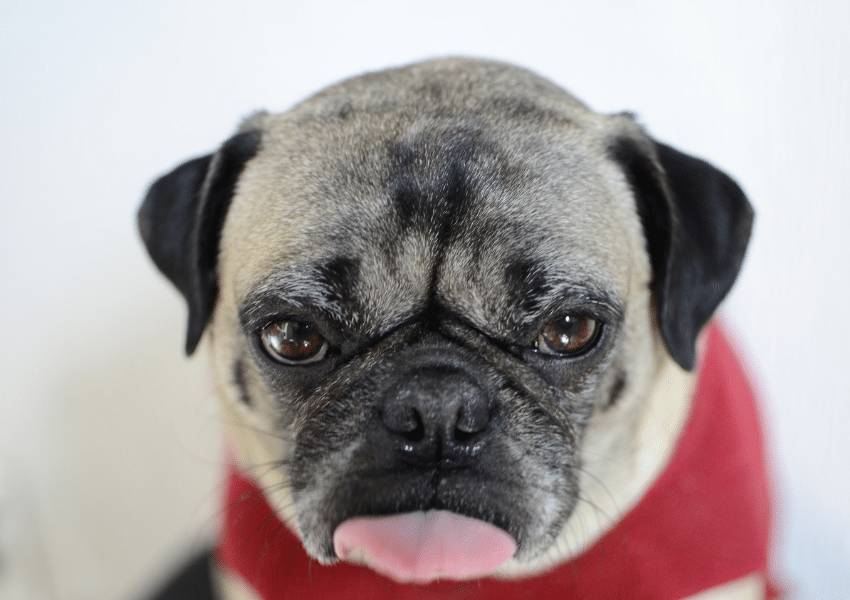Ever wonder what’s going on behind those puppy-dog eyes or that flick of your cat’s tail? Spoiler alert: your pet is talking to you all the time. From happy wiggles to warning growls, our furry friends have a whole language of their own. The good news? Once you know how to decode it, you’ll unlock a secret world of wagging, purring, and even side-eye that reveals exactly what your dog or cat is really saying.
Dogs: The Masters of Expression
Dogs are an open book—if you know how to read the pages. Their eyes, ears, tails, and even fur are constantly sending signals about how they’re feeling.
Eyes
- A relaxed dog has soft, almond-shaped eyes that may even squint slightly.
- If their eyes are rounder than usual or showing a lot of white (often called “whale eye”), they may be stressed or on edge.
- Dilated “glassy” pupils can mean fear or high arousal.
- Dogs that avoid looking at you directly are feeling uneasy. They also may be resource guarding food or a toy.
- Calm, soft eye contact shows trust. Prolonged, hard stares, however, are a challenge—best to avoid.
Ears
- Forward-facing ears mean interest and alertness (even floppy-eared pups will shift the base forward).
- Slightly back often means relaxed and approachable—especially if paired with a wagging tail.
- Pinned flat against the head? That’s a sign of fear, nervousness, or submission.
Mouth
- A relaxed dog usually has a slightly open mouth with upturned corners.
- Closed, tight lips or pulled-back corners can signal fear.
- Wrinkled muzzle and bared teeth = warning: back off.
- Some dogs even show a “submissive smile” (teeth showing with wagging tail, lowered head, squinty eyes).
- Yawning or lip licking can be early signs of stress.
Tail
- Neutral (in line with the spine) = relaxed.
- High and stiff = excitement or agitation.
- Tucked between legs = fear or discomfort.
- Loose, wagging tail = friendly—but always check the rest of the body for context.
Vocalizations
- Barking can mean joy, fear, or alertness—tone and pitch matter.
- Whining often signals a need for attention, comfort, or even pain.
- Yelps = pain.
- Growling = a clear warning.
- Howling may be a response to sounds or a sign of anxiety.
Posture & Movement
- Play bow (front end down, rear up, wiggly movements) = “let’s play!”
- Rolling on back can mean trust—but it’s not always an invite for belly rubs.
- Frozen posture = fear or guarding behavior.
- Trembling may signal anxiety but also check for medical issues if it’s frequent.
- Raised hackles (the hair along the back) don’t always mean aggression—they can signal fear, stress, or excitement.
Pro Tip: Keep your pup mentally engaged with Brain Games for Dogs.
Cats: The Subtle Storytellers
Cats can be a little harder to read than dogs, but once you know the signs, their signals are just as clear.
Eyes
- Slow blinks are the ultimate “I love you.”
- Dilated pupils = excitement, fear, or aggression.
- Constricted pupils = tension or aggression.
- A hard stare can mean dominance or a brewing fight.
- A sideways glance can mean trust and comfort.
Ears
- Forward and relaxed = curious, content.
- Flat against the head = annoyed, scared, or defensive.
- Constant swiveling means they’re listening intently.
Tail
- Upright with a slight curve = happy, confident cat.
- Puffed up = scared or upset.
- Flicking or thrashing = irritated—time to back off.
- Low and tucked = anxious or frightened.
Whiskers & Fur
- Forward whiskers = curiosity and excitement.
- Pulled back whiskers = fear.
- Fur standing on end (with arched back) = threatened or defensive.
Vocalizations
- Growls, hisses, yowls = “back off.”
- Purring usually signals contentment—but sometimes pain.
- Trills (that high, chirpy sound) = friendly greeting.
- Meows and chirps can mean anything from hunger to frustration to simple “chattiness.” If it’s constant, check with your vet to rule out meows due to pain.
Posture & Behavior
- Play mode: crouching, pouncing, bringing you toys.
- Crouched ball: ready to spring—anxious or fearful.
- Belly up: trust, but not always an invitation for tummy rubs. The cat could latch onto your well-meaning hand with its claws and teeth.
- Arched back with fur up: fear or aggression.
- Cats often point their whole body toward where they want to go—it’s their way of saying, “excuse me, I’m headed this way.”
Building a Better Bond
Learning to “speak” dog and cat doesn’t just prevent misunderstandings—it strengthens the bond you share. You’ll know when your dog really wants to play, when your cat is overstimulated, and when either one needs a little space. Over time, you’ll find yourself communicating so well, it’ll feel like you and your furry friend share your own secret language.
We love our pets, and part of caring for them means protecting their health and wellbeing. Make sure your dog or cat is fully protected with pet insurance. Looking to save on veterinary care? Check out our blog on 9 Ways to Save on Your Vet Bill.
This article is furnished by California Casualty, providing auto and home insurance to educators, law enforcement officers, firefighters, and nurses. Get a quote at 1.866.704.8614 or www.calcas.com
- Tires 101: Rotation, Alignment and Balancing Explained - December 22, 2025
- Holiday Fire Safety Tips - December 16, 2025
- Party Potluck Recipes - December 11, 2025

